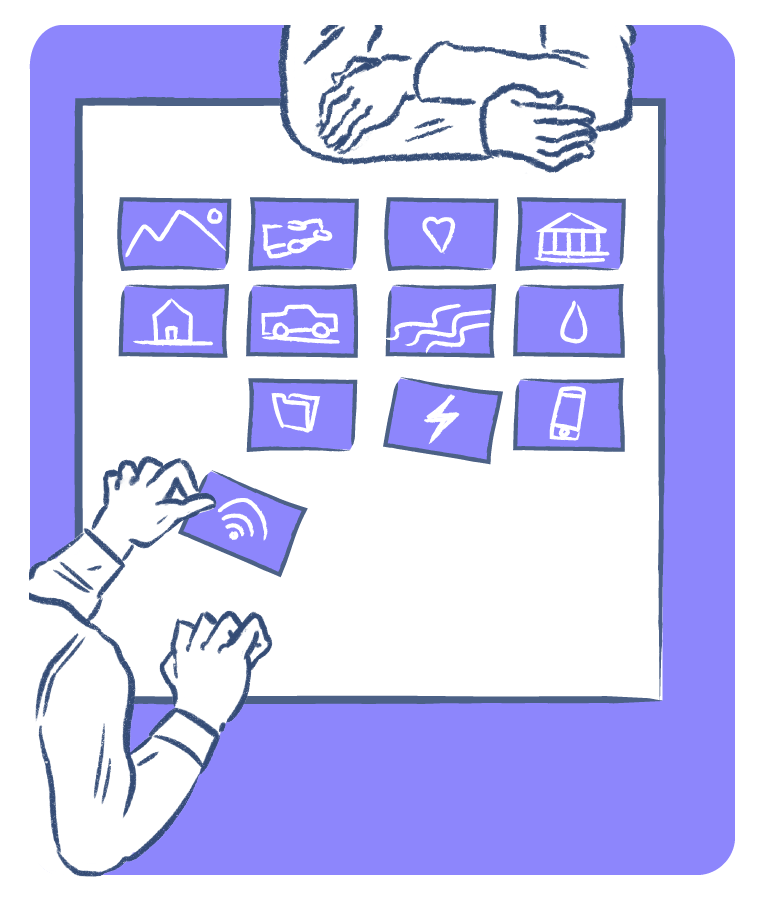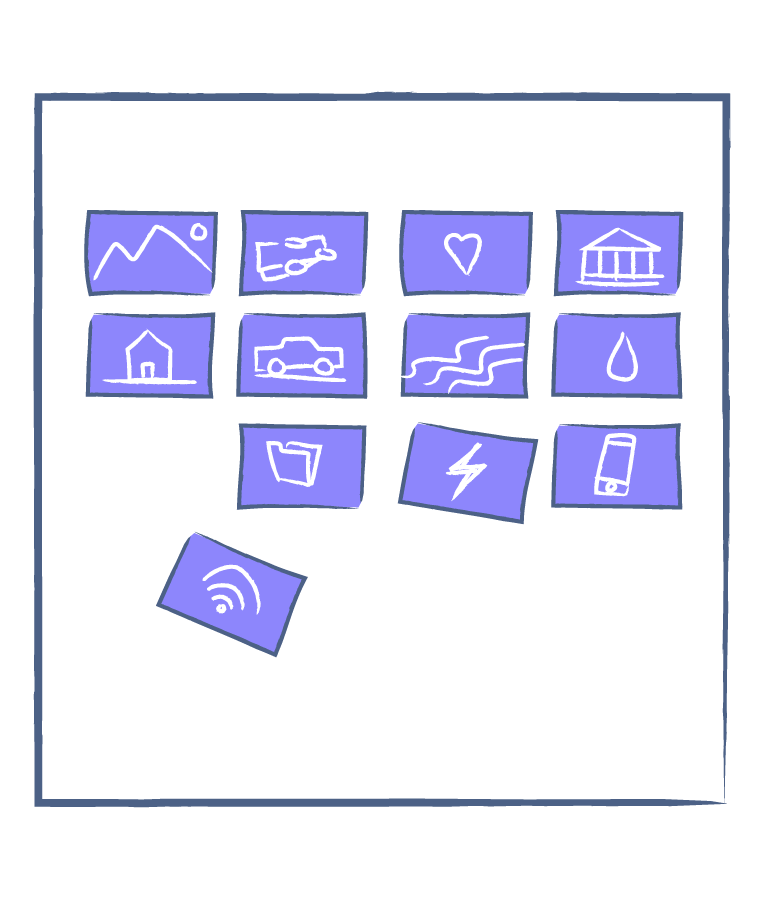HUMAN CENTERED DESIGN | DISCOVERY
Card Sorting
30 Min+
Card Sorting is a research activity in which respondents are given cards that carry certain visual cues, and are then asked to arrange the cards in an order relevant to the research enquiry. Card sorting replaces survey type questions that ask respondents to order, group or simply react to certain product, service, or system aspects. The visual nature of cards helps minimise loss in translation, and increases engagement during research.
USE CASES
- Map user preferences with regard to competing options.
- Map sequence of events in a journey of use.
- Map users' perceptions with regard to a product or service.
LIMITATIONS
Visuals on cards can impact understanding - contextualisation and localisation are a must. Any Card Sort with more than 10-20 cards risks overwhelming respondents.

